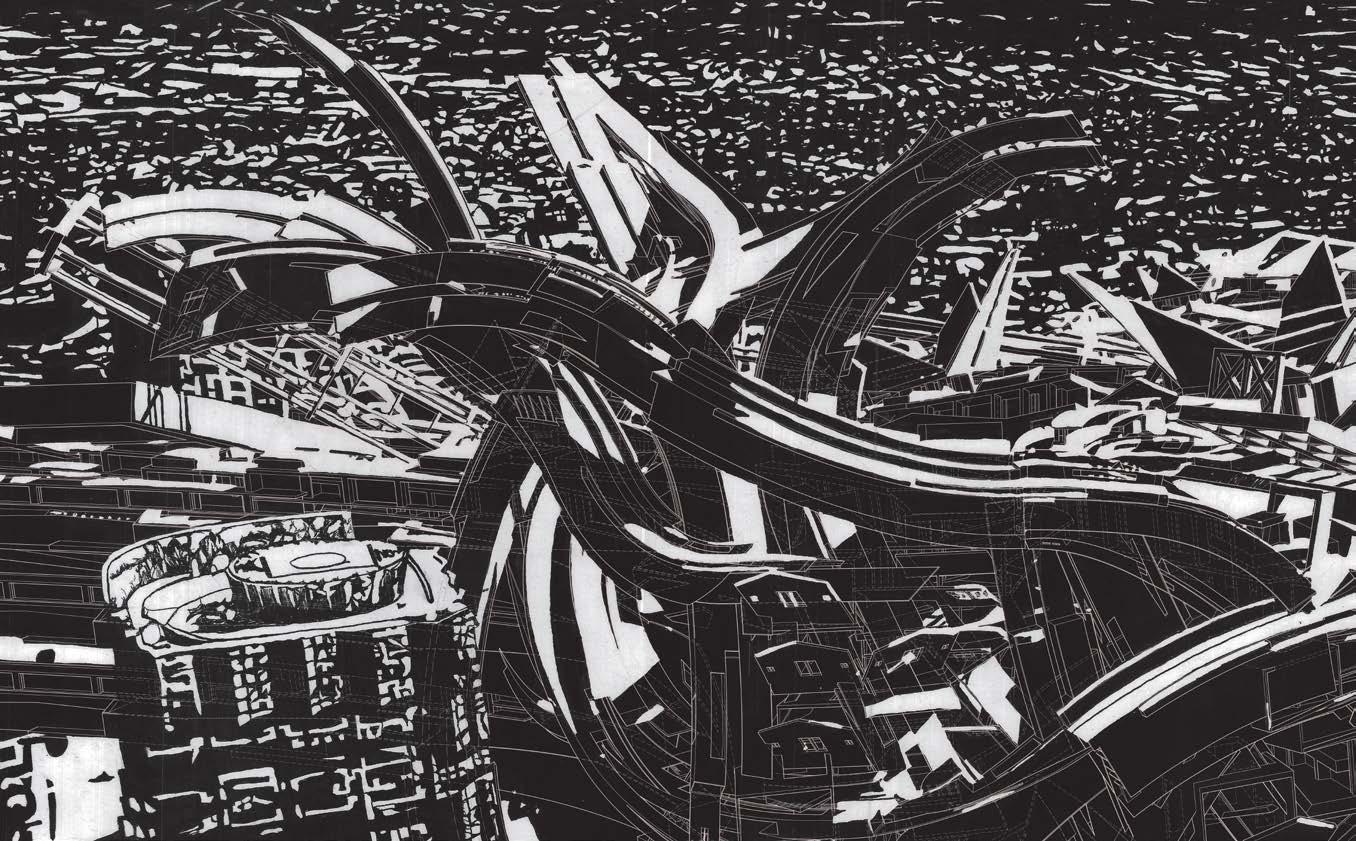

ANDREW KIM
CONTACT
akim108@gmail.com
763-313-3943
Dallas, TX | Brooklyn, NY
EDUCATION
Pratt Institute, Brooklyn, NY
Bachelor of Architecture
2021-2026 (expected)
GPA 3.93
Irondale High School, MN
2017-2021
GPA 4.6
SAT 1570, National Merit Finalist
UNIVERSITY HONORS
President’s List awarded every semester
Final projects selected for School Archives:
Dec 2021: Technics
May 2022: Design II, Representation II
Dec 2022: Intermediate Design I
May 2023: Intermediate Design II
Dec 2023: Comprehensive Design I
Intermediate Design I Project displayed at Institute-Wide Cross-Core Pinup Review
COMPUTER SKILLS
• Rhino
• AutoCAD
• Revit
• Adobe Suite
• V-Ray
• Cinema4D
REFERENCES
• Octane Renderer
• Enscape
• Twinmotion
• MS Suite
• G-Suite
• D4 Render
• Christian Lynch, clynch2@pratt.edu, 917.400.1085, Principal at Lynch Eisinger Design Architects
• Clara Ha, chax3@pratt.edu, 917.864.4221
Senior Architect at Stantec
• David Kim, dkim67@pratt.edu, 310.594.9672, Acting Assistant Chairperson Pratt SoA
• Jason Ivaliotis, jivaliot@pratt.edu, 732.859.1476
Director of Design at Hill West Architects
WORK EXPERIENCE
Architectural/Interior Design Intern
Scarpidis Design Corporation, Chelsea, NY
Summer-Fall 2023
• Drafting: AutoCAD construction drawings to send directly to contractors and as-built drawings based on site visits
• Rendering: Rhino, V-ray, Photoshop conveying architectural design concepts and interior furniture selections to clients
• On-site collaboration: reviewed issues with contractors and answered their design questions
Design 101 and 102 Teaching Assistant
Professor Clara Ha, Pratt Institute, Brooklyn, NY
Fall 2022 - Present
• Instructed students on computer software and physical model-making processes with Rhino and Adobe Suite
• Recorded video tutorials for digital studio workflows
• Critiqued students on design decisions and drawings
Social Media Content Creator
August 2019 - Present
• Followers/Subscribers: over 140,000 on Instagram and 230,000 on YouTube
• Organized multiple charity events, including selling merchandise and hosting online fundraisers
• Video-edited and uploaded vlogs, teaching students about the experiences of college and architecture school
• Collaborated with brands such as Microsoft, Grammarly, LG, and Squarespace to create promotions and reach target audiences
EXTRACURRICULAR
American Institute of Architecture Students (AIAS)
Pratt Institute Chapter, Brooklyn, NY
January 2022 - Present
• Chapter President (2023-Present)
• Organized school events, lectures, and workshops
• Coordinated executive board and members
• Social Media Director, Executive Board (2022-2023)
• Organized promotional campaigns and collected student submissions for social media
• Planned collaboration with Columbia GSAPP’s AIAS
National Organization of Minority Architecture Students (NOMAS)
Pratt Institute Student Chapter
August 2021 - Present
• Collaborated with peers for events and networking
I am interested in creating socially-sensitive projects designed through a rigorous process of both analog and digital craft.




 03 PRESERVING THOROUGHFARE Fall 2022
03 PRESERVING THOROUGHFARE Fall 2022
TEXTILE ARTS CENTER
CRITIC
Salvatore Tranchina
COURSE Fall 2024, Comprehensive Design I, Partner Saori Takahashi
SITE Lower East Side, New York
Located at the intersection of New York’s Lower East Side, East Village, Bowery, NoHo, and Chinatown neighborhoods, Sara D. Roosevelt Park is a seven-block strip of greenery that acts as a meeting place for an ecclectic mix of communities. The circulation of the park follows the linearity of the strip itself, paralleling the traffic of the adjacent Chrystie and Forsyth streets. The project site sits at the northern tip of the park on East Houston Street, containing an odd juxtaposition of historically-rooted buildings and new developments. Surrounded by low-income NYCHA public housing, luxury apartments, small public schools, and boutique art galleries, the introduction of a semi-commercial art-supply market and community art center aims to balance the diversity of the park’s users and contextual buildings, the role of the site as a gateway to the long linear strip, and the needs of the client: the Textile Arts Center
The project splits the semi-conditioned market and the conditioned art center, placing building support programs between the two. Using a system of thick, shifting walls, the project echoes the linear movement of the park and the cross-grain movement that the activity of the park encourages. As patrons of the interior market and students of the art-center enter from the north and exit to the south, they move along shifting walls until meeting at the exterior market, where students can sell to patrons. Structurally, the shifting of these walls is contained by a one-way joist canopy, unifying the cross-grain interactions between the two sides under a single roof. The defining element of the canopy is a fabric that weaves between wooden purlins, filtering the sun to provide diffuse daylighting. Materially, the project uses brick, wood, fabric, corten-painted steel, copper-painted metal fabric, fiber cement panels, and white gypsum to provide a warm interior and a palette that fits both newer and older context.



 floor plan upward)
Diagram model of pathways on existing park (North downward)
floor plan upward)
Diagram model of pathways on existing park (North downward)
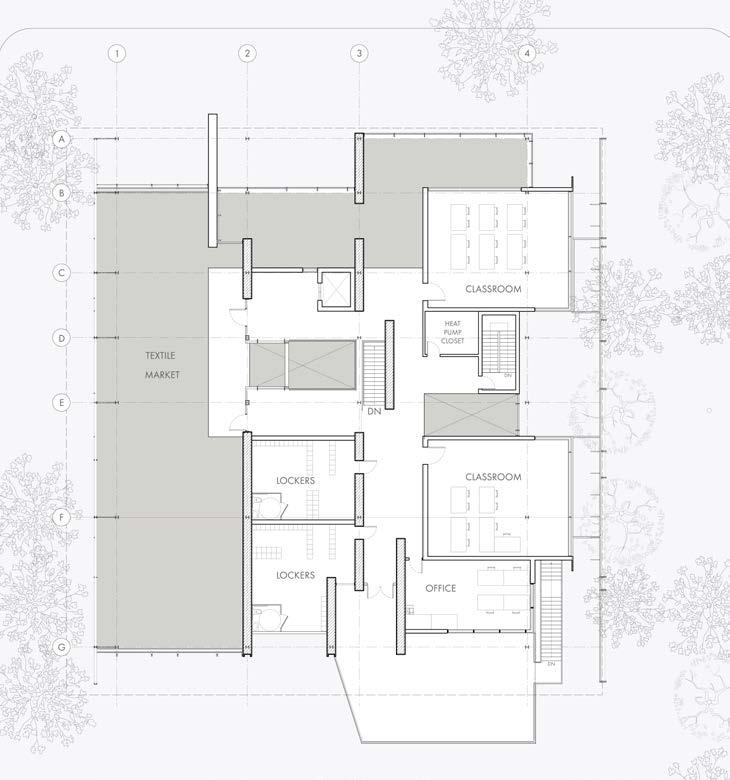


EXTERIOR RENDER
Perspective view from the northern, entrance side of the project. canopy. The middle lobby entrance separates the open-air (Rhino, Cinema4D, Octane Render, Lightroom, Photoshop)



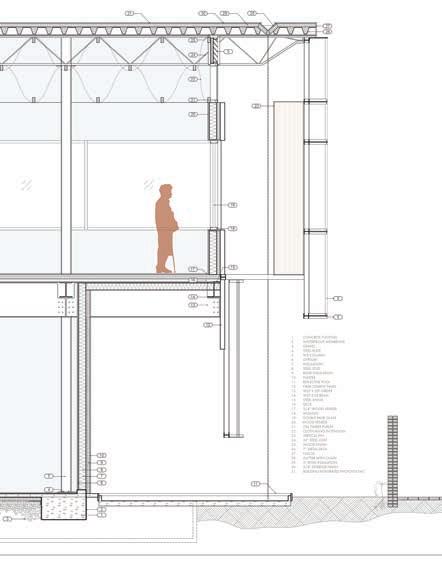

SOUTH ELEVATION
The back facade, where visitors to the market and arts center exit and converge. The second floor exits onto a balcony.
MARKET AND ARTS CENTER
Cut through the center of the project, this drawing shows the divide between the market (left) and arts learning center (right) sides of the project. The central mezzanine overlooks the gallery, the market, and the central crossing zone. Fabric woven between wooden purlins diffuses light into the building, allowed in via light-monitors. The facade employs metal fabric colored in warm copper tones to limit heat gains and to create a warm interior.
Rhino, V-Ray, Illustrator, Photoshop
EAST ELEVATION
The classroom-side facade, where metal fabric ing classrooms. With perforated brick landscaping


fabric frames hang from the roof and the cantileverlandscaping walls, this creates a layered patchwork.
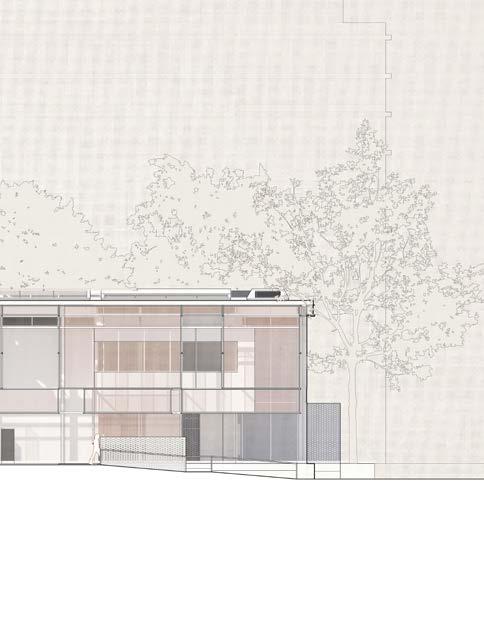

WEST ELEVATION
The market-side facade, where passerby of the park’s thoroughfare can see through the layers of the building.
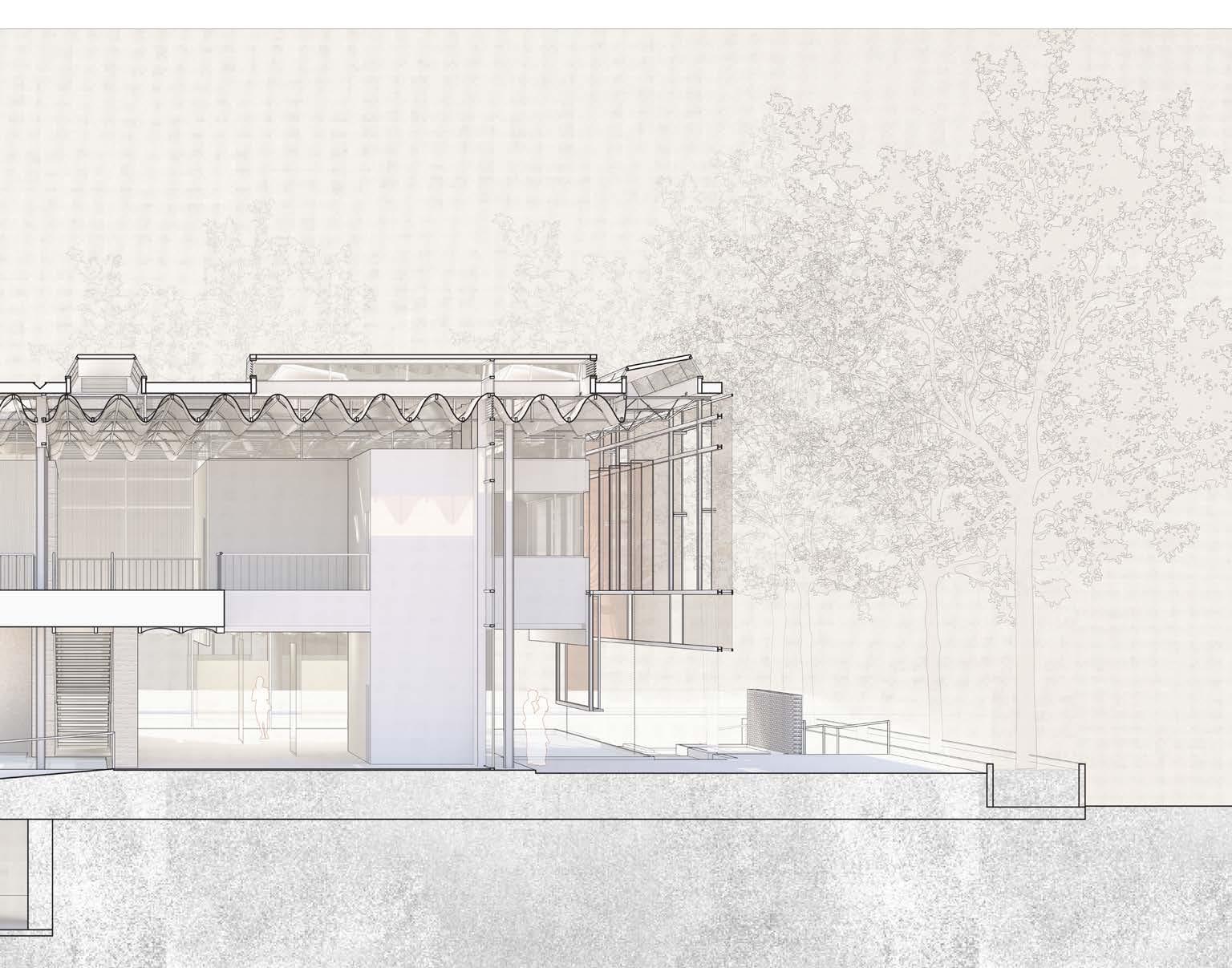
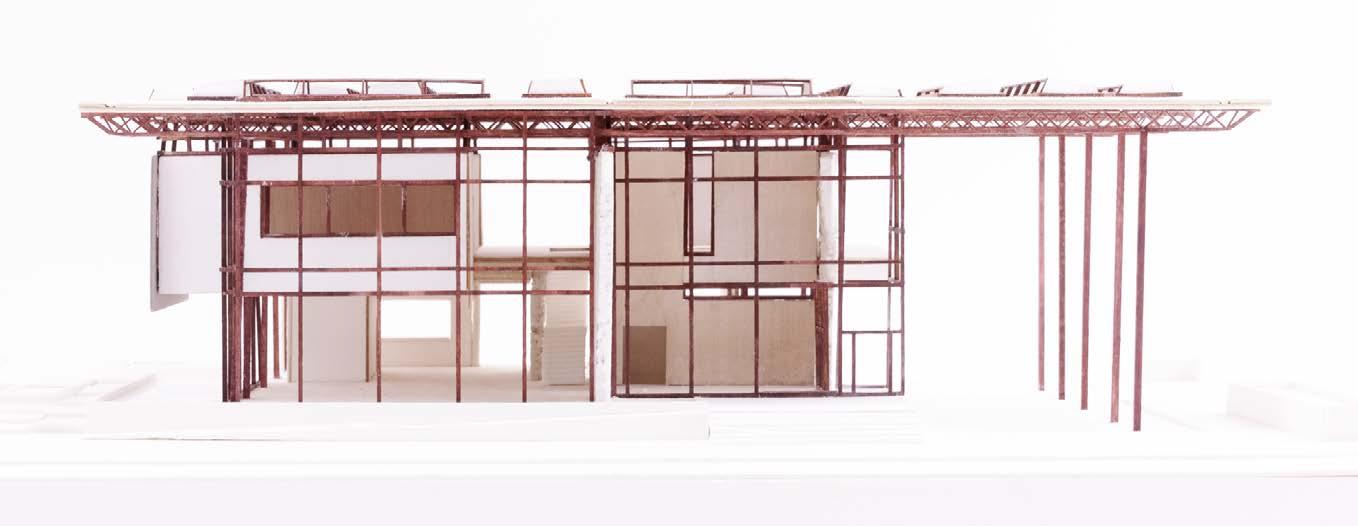

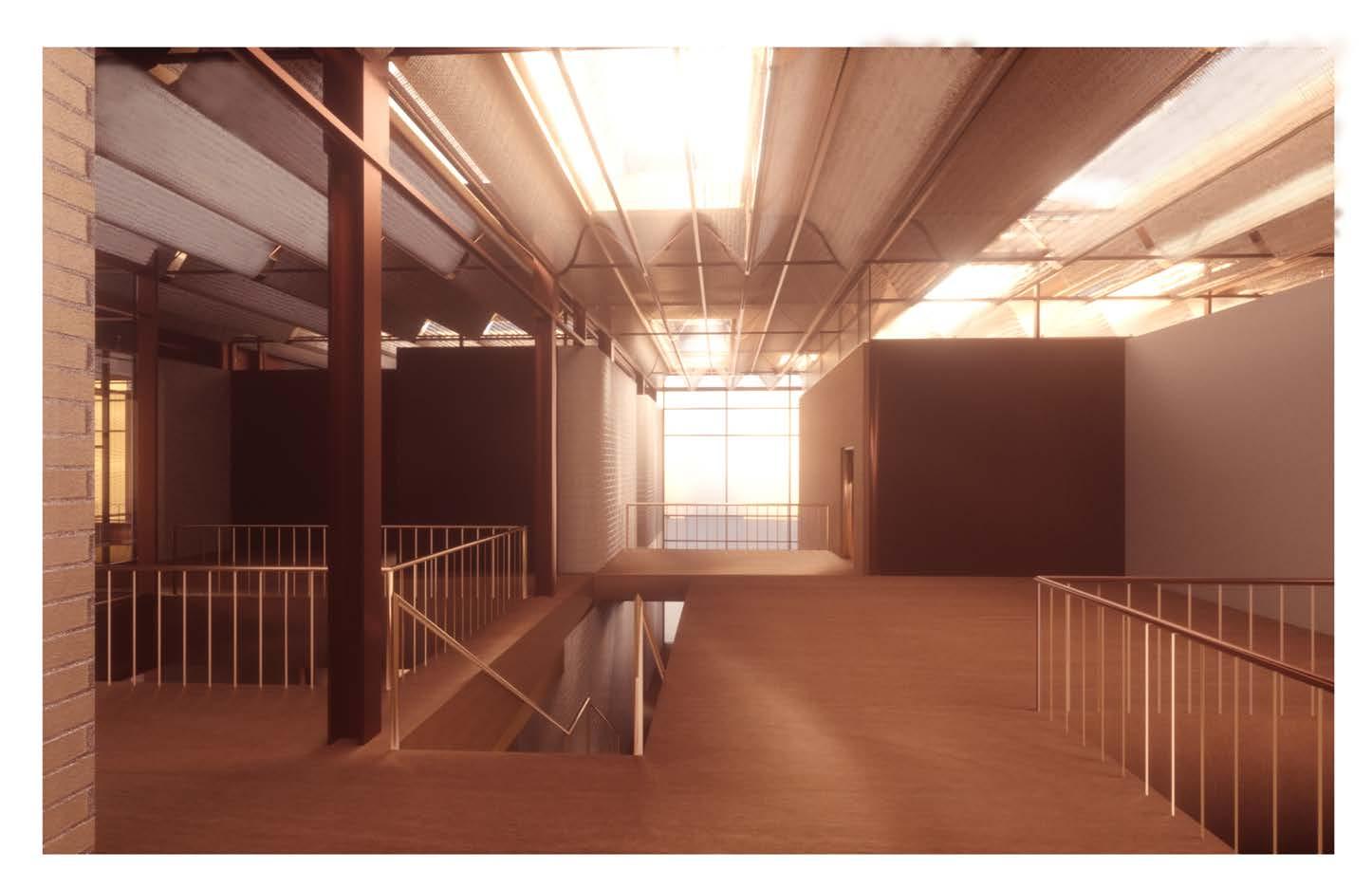 FINAL SECTIONAL MODEL: Front/North Facade
FINAL SECTIONAL MODEL: bristol paper, stained basswood, plaster cast with brick texture
INTERIOR RENDER: second level hallway, fabric woven around purlins filters daylight (Cinema 4d + Octane)
FINAL SECTIONAL MODEL: Front/North Facade
FINAL SECTIONAL MODEL: bristol paper, stained basswood, plaster cast with brick texture
INTERIOR RENDER: second level hallway, fabric woven around purlins filters daylight (Cinema 4d + Octane)
PLAN OBLIQUE CHOISY
Worm’s-eye-view showing daylighting, structural, and mechanical roof-layers. Rhino, V-Ray, Illustrator, Photoshop


STRUCTURAL SECTION
The structural system of the project is a one-way steel joist. The second floor slab is typical steel framing. The “thick” walls are actually brick veneer on steel studs because the second floor has walls that are shifted in comparison to the first floor, where there is only a column. This also allows for a clerestory detail to be added above the thick walls, providing visual continuity to the fabric canopy roof. The roof assembly rests on the joists, but it also uses wooden purlins to weave the fabric around. Drop ceilings are used to vary the height of the fabric, and light monitors are used to let light through the roof. The metal fabric facade hangs from the roof as well as the second floor slab on the east.
Rhino, Illustrator


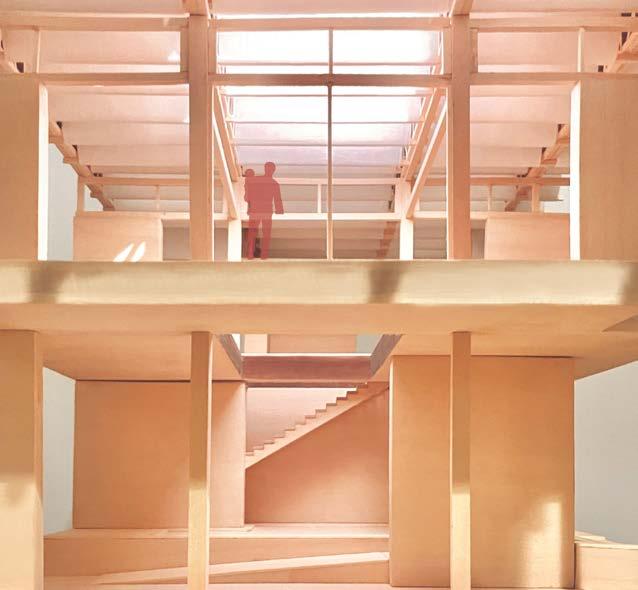 Second-Floor Mezzanine
Market Cross-over (looking from market)
Second-Floor Mezzanine
Market Cross-over (looking from market)


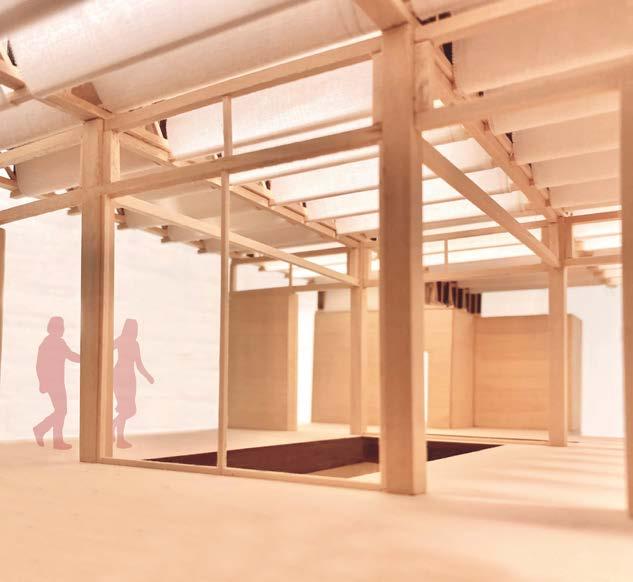 Second-Floor Overlook
Second-Floor Mezzanine
Second-Floor Overlook
Second-Floor Mezzanine
PROCESS
The process of defining the program, second-floor slab and the layering of the roof were crucial to the clarity of this project.
Hand-modeling, Laser-cutting, Premiere Pro, Rhino, AutoCAD, Illustrator, Twinmotion
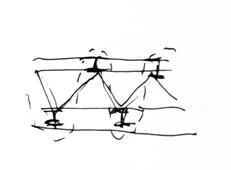
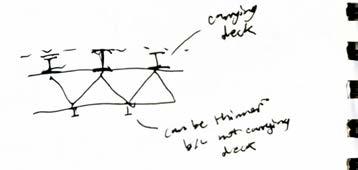


ROOF STUDY-RENDERS:
Fast Twinmotion renders of Rhino model to understand the materiality of the roof system.

CHUNK STUDY-MODEL:
Fabric within the roof structure is lifted by a clererstory. laser & hand-cut wood, muslin fabric



DYED FABRIC STUDIES (ABOVE):
Exploration of a single strip of half-dyed fabric as a wetwall division between two program categories.
SECOND FLOOR SLAB (RIGHT):
Structural drawing that evolved from early program diagrams (below).






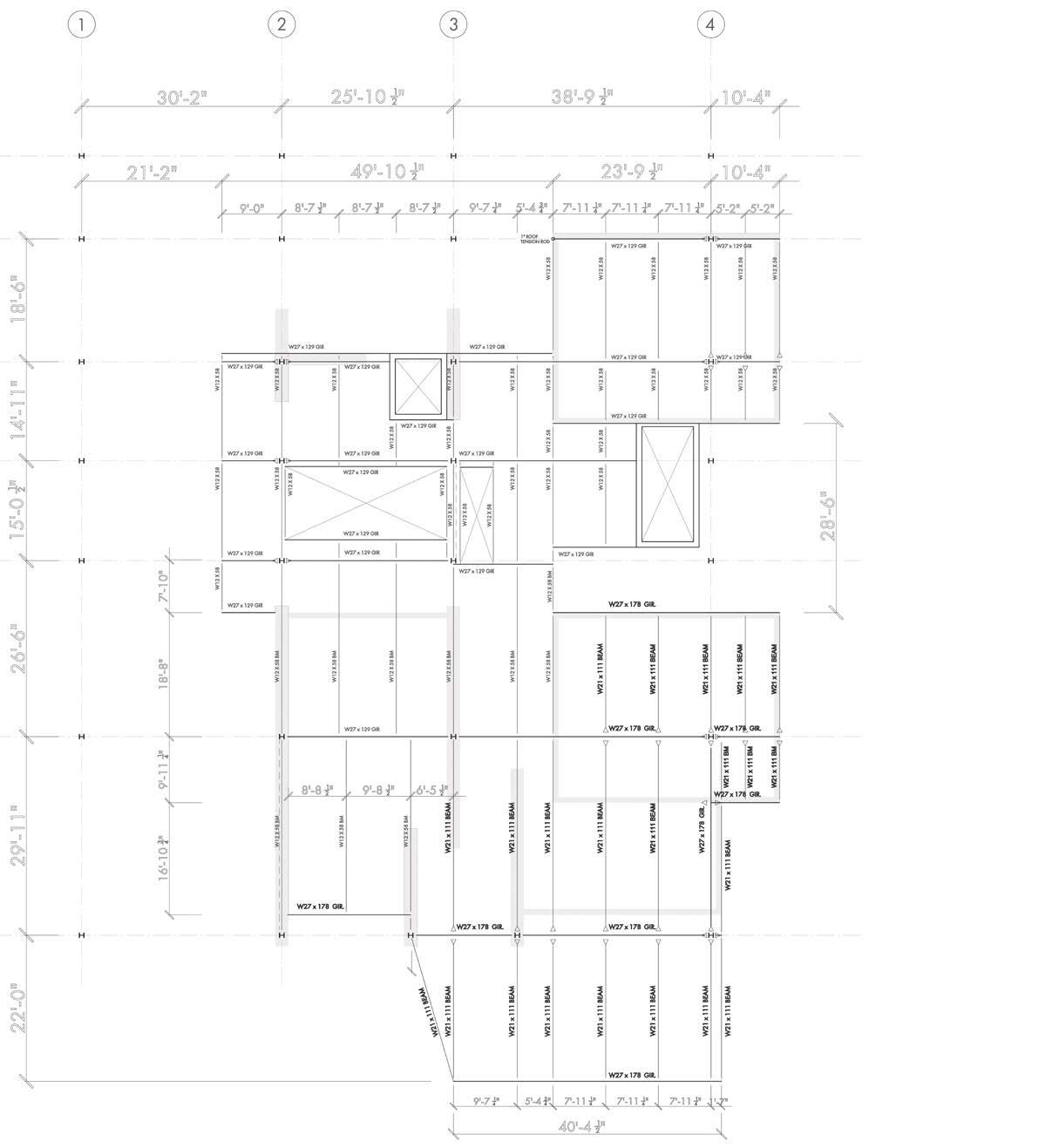





MORE THAN A DIAGRAM - BUILDING SYSTEMS
The project employs many passive building systems to optimize interaction with the environment. The metal fabric facade with vertical fins ing-integrated photovoltaic panels line the flat roof and collect energy to be fed back into the city grid. A stone floor in the market provides ing the wintertime. Operable louvers in the light monitors and cleretstories along with the openness of the metal fabric allow for prevailing meable pavers form walkways around the project, reducing runoff and filtering water of pollutants. Gutters on the roof collect rainwater in an underground cistern for greywater usages. Reflecting ponds located both inside and outside of the building provide evaporative Rhino, Illustrator, Photoshop
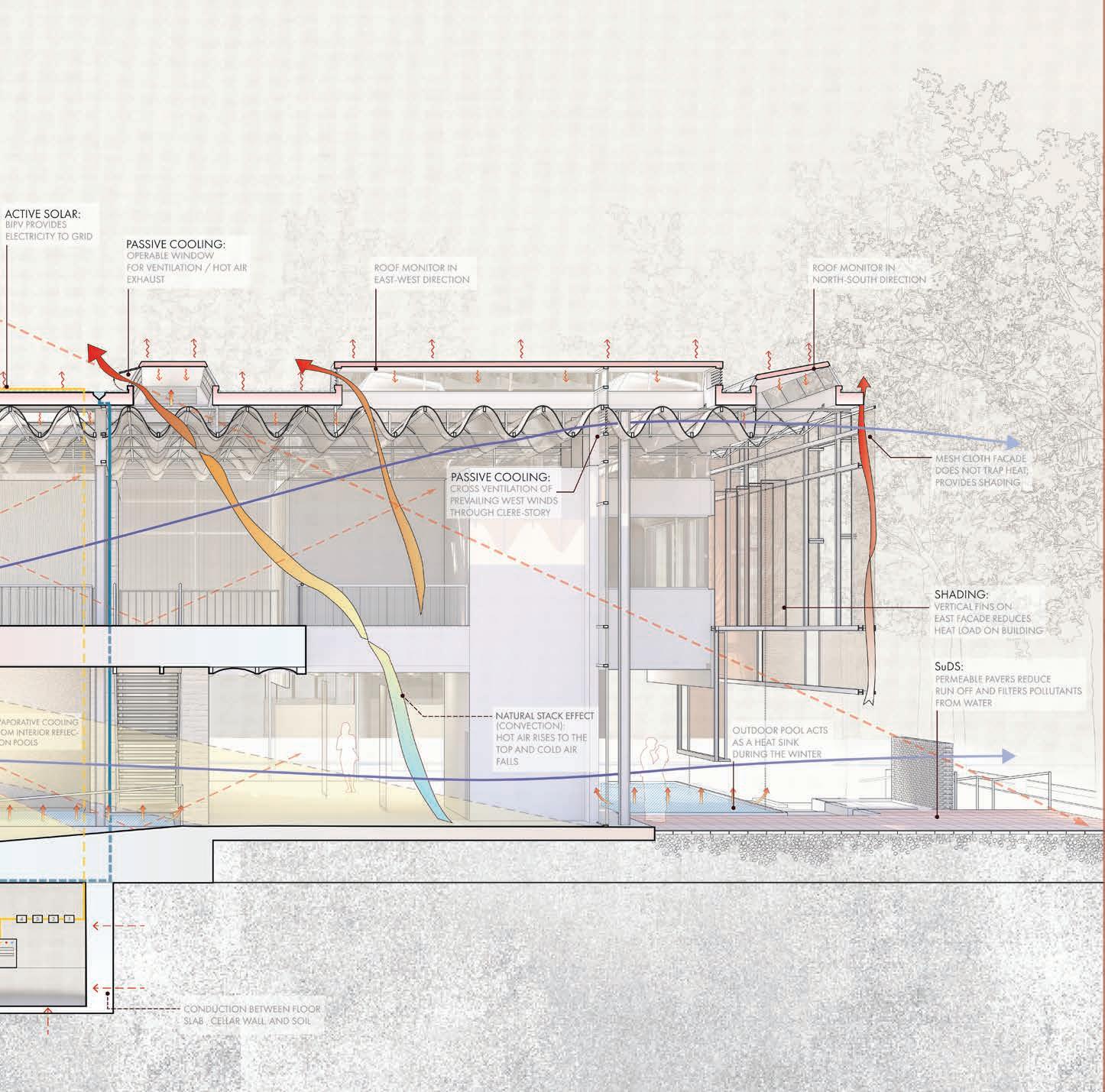
fins provides shading to limit heat gains. Buildprovides thermal mass for passive-heating durprevailing winds to passively cool the building. Perrainwater, which is routed down walls and collected cooling to help moderate termperatures.
SOFT BOUNDARIES
CRITIC
Maria Vrdoljak
Spring 2023, Intermediate Design II COURSE
SITE
Brooklyn, New York
Shibaura House by SANAA Architects is a community center located in Shibaura, Japan. Structurally, the building uses a typical column-slab system, supported laterally by diagonal bracing. To create double-height spaces within the square plan, the project employs extrusions with curved interior edges to create voids in the concrete slabs. Vertical circulation follows these interior edges through curving stairs. The envelope of the community center is a glass curtain wall, encasing the project in a completely transparent box.
“Soft Boundaries” is a critique on the Shibaura house. To introduce geometric order to the free-flowing curves of Shibaura, the project employs the circle and cylinder as a system for creating voids. Rather than extruding only voids, this formal system is also used to extrude solids. As opposed to the light, glass facade of the precedent, the use of brick introduces weight and solidity to the project. Perforating the brick in certain areas blurs the polar opposition of void-solid and light-dark in the project. The edge of the project is also peeled back and voided in plan, receding the entrance from the sidewalk edge and questioning the distinction between project and site. The result is an envelope that creates a “soft” boundary with its site.
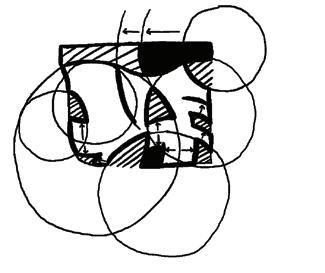

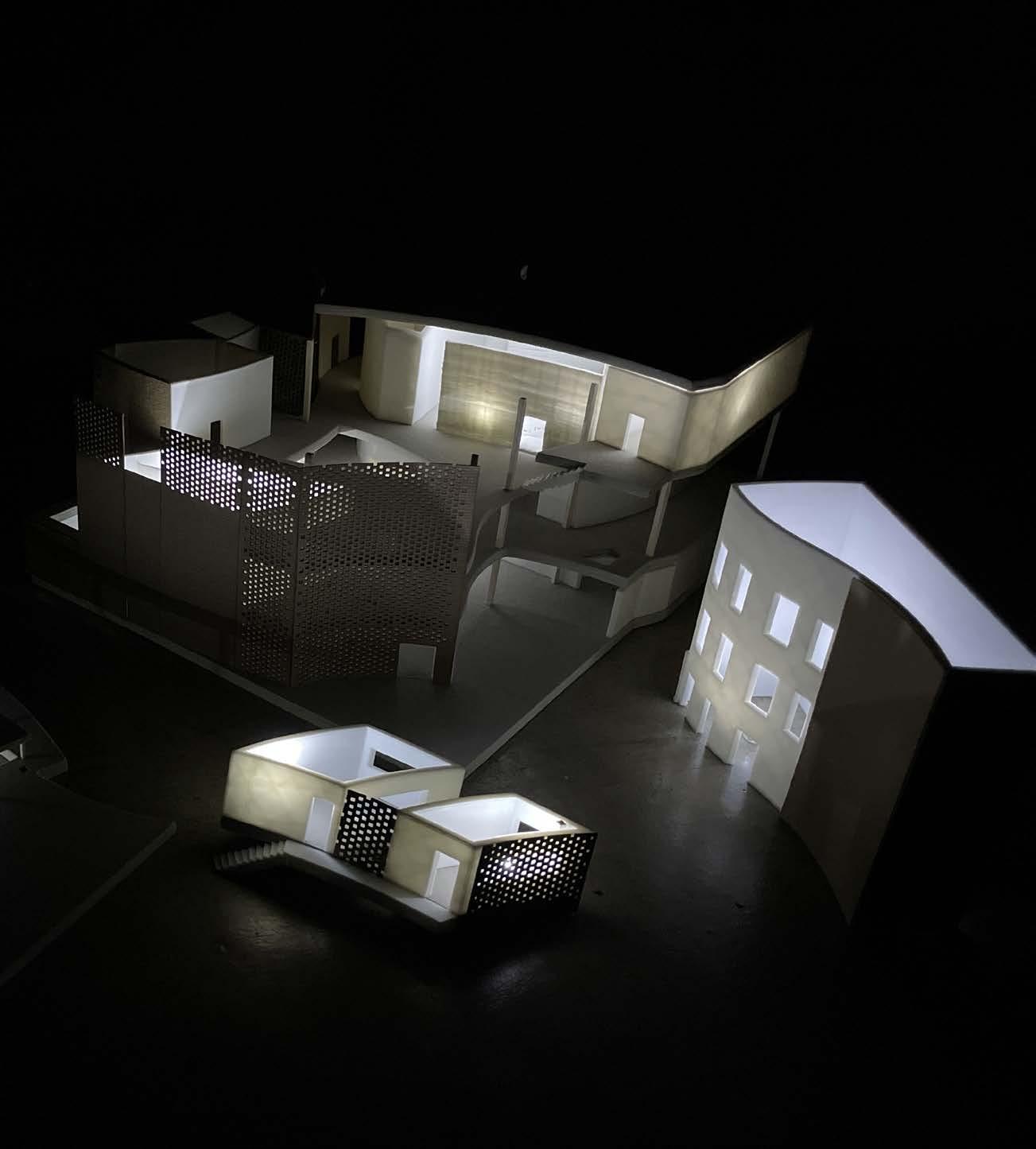

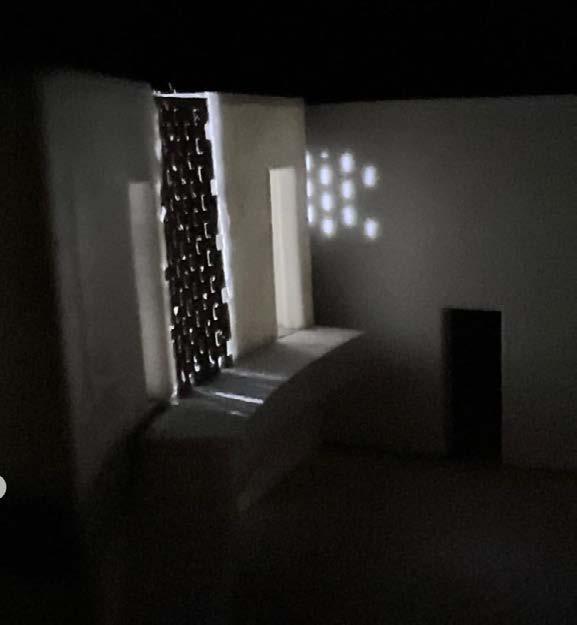


FINAL MODEL IMAGES
LED lights placed inside of model to show perforated brick materiality

AXONOMETRIC VOID DIAGRAM
Cylinders overlap to define voids, opening the project to its context


Roof removed, volumes in model (sanded grey museum board, basswood, chipboard, 3d-print)

PRECEDENT ANALYSIS MODEL
Voided Floor Slabs of Shibaura House by Sanaa (sanded grey museum board, basswood, bristol paper)
Theater, service volume, elevator shaft, fire-escape, and classroom removed

PRECEDENT ANALYSIS MODEL
Voids as Solids (voids 3D-printed in PLA)
FINAL MODEL FINAL MODEL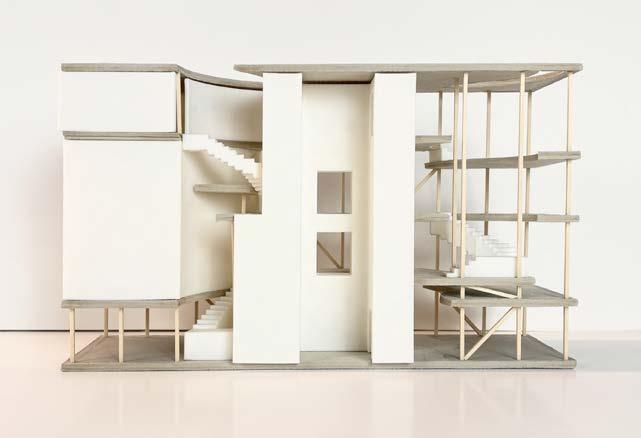

FIRST ITERATION - STUDY MODEL
Intersecting circles inform circulation, voids, and solids (process: sketch, Rhino, laser-cut museum board, 3D print)

SKETCH
Formal system of overlapping circles. Successive pages of trace-paper notebook were used to build each floor plan.
PROCESS
This studio stressed the production of study models for design development. Analog and digital workflows were used in tandem to create controlled, precise models. Grey museum board slabs were hand-sanded to create a soft texture to the slabs of the models. Rhino, AutoCAD, Laser-cut, 3D Print

MIDTERM ITERATION - STUDY MODEL
Introduced floating solid volumes to the formal system. The bottom left shows an entrance recessed from the street, while the upper-right tests perforated brick on the facade.

MIDTERM ITERATION - STUDY RENDER
Using rendering as a tool to test the layering of perforated brick, glass, solid wall, and stairs on the facade. (Rhino + V-ray)
PRESERVING THOROUGHFARE
CRITIC
COURSE
SITE
Christian Lynch
Fall 2022, Intermediate Design I
Harlem, New York
The precedent, the Kimbell Art Museum by Louis Kahn, is an art museum located in Fort Worth, Texas. Formally, it employs the barrel vault roof typology to guide visitors through its gallery spaces. Its spaces can be categorized into three types: conditioned space, voided courtyard, and unconditioned shaded space. Jackie Robinson Pool is located in Harlem, New York. Within an urban district of predominately low-income residents, the pool and its adjacent park serve as communal spaces for recreation and relaxation. Upon a site visit to the park, one immediately notices the tranquility of the park space within its dense urban context. Tall trees provide filtered sunlight for benches along a thoroughfare and staircase that bridge a nearly 30’ grade change. Situated along a busy street corner, locals frequently pass through the park to shorten their walks and enjoy a moment of peace from the chaotic context.
“Preserving Thoroughfare” reconciles the addition of new construction onto the park site, preserving the thoroughfare of the park underneath an unconditioned half-barrel vault for shade. Space for seating and plant growth preserve the public park feel of the site center. New pantry and bathhouse programs are split in half, recessing their entrances into the middle of the site and making room for the public passerby. Additionally, the grade change is made accessible by introduciton of ADA accessible ramps. Views of programmed space are framed from the street, the public thoroughfare, and an additional public stair on the existing pool side that travels under and through the bathhouse, creating visual interaction between users. The W 145th St side features a new stair that links to the public thoroughfare just past the pantry donation bin, increasing porosity into the public space while encouraging generosity. The new pantry and bathhouse obliquely rotate the precedent barrel vault to make room for the public. At their centers, a courtyard offers private repose layered within the program space. Between intersecting vaults, diagonally adjusted vaults provide additional shade.


 Plan oblique “Choisy” drawing of the Kimbell Art Museum
Plan oblique “Choisy” drawing of the Kimbell Art Museum

PLAN DRAWING
Plan drawing of project, showing public thoroughfare from corner of Edgecomb Ave. and W 145th St. to Bradhurst, matching the path of the original parks’ thoroughfare. Pantry donation and main thoroughfare access on W 145th. Pantry exits and public seating on Bradhurst. Side thoroughfare from Edgecomb runs beneath the bathhouse, past Jackie Robinson Pool, to Bradhurst.
Programs: Rhino, Adobe Illustrator

PROJECT MODEL, 1/16th SCALE
Process: Rhino, AutoCAD, CNC Mill MDF Base, laser-cut basswood, hand-cut and wet-curved
Final project model with roof removed, north is facing the right side of the image. The project tackled a nearly 30 ft. grade change, made ADA accessible with ramps. The bathhouse (right) and pantry (left) are separated, divided by a semi-shaded public thoroughfare. Curved courtyards at the intersections of barrel-vaults provide moments of open-air repose.
CIRCULATION STUDY:
Basswood sticks represent desired circulation changes, overlaid onto a CNC-milled foam study model.


SITE STUDY-MODEL:
3D printed building placed on foam site for scale, roof lifted to show circulation

 The negative of Kimbell Art Museum barrel vaults intersected obliquely, CNC-milled foam and geso.
Obliquely intersecting vaults, placed with program on a hypothetical site, CNC-milled foam.
Program volumes, placed on the project grading, CNC-milled foam and 3D print.
The negative of Kimbell Art Museum barrel vaults intersected obliquely, CNC-milled foam and geso.
Obliquely intersecting vaults, placed with program on a hypothetical site, CNC-milled foam.
Program volumes, placed on the project grading, CNC-milled foam and 3D print.
PROCESS
The process of placing bathhouse and food pantry programs and circulation on a site with a 30foot grade difference required iteration and test-modeling. This was approached by obliquely rotating the precedent barrel vault, aligning to site bounds while preserving the existing diagonal thoroughfare through the park. In addition, the old thoroughfare was made ADA accessible with the addition of ramps. Model-making in early stages was done with fast, digitally-connected methods including 3D printing, CNC foam-milling, and laser-cut chipboard. For the final model, MDF wood was milled in place of foam, and basswood was laser-cut in place of bristol and chipboard.
Hand-modeling, Laser-cutting, Rhino, AutoCAD

EARLY STUDY MODEL:
Established this design process’s model-making methods: CNC milled-foam and 3D printing.



PROCESS SKETCHES:
Resolving site edge conditions and mullion details: trace paper over Rhino/Illustrator digital drawing
 project site with print.
Iteration of project on site, hand-cut bristol and laser-cut chipboard
Small-scale model of final project on site, 3D print and CNC-milled foam.
project site with print.
Iteration of project on site, hand-cut bristol and laser-cut chipboard
Small-scale model of final project on site, 3D print and CNC-milled foam.


From the north side, visitors can enter below the slab of the bathhouse building into the side thoroughfare.

Cut through the main thoroughfare and bathhouse, 3D-prints show seating, planters, veneers, and furniture.
Project Model, 1/16th Scale Sectional Model, 1/8th Scale EXTERIOR View from main thoroughfare, veneer made accessible vaults, providing is shown side of Rhino, Illustrator,EXTERIOR PERSPECTIVE
from the intersection of Edgecomb Ave. and W 145th St, showing the thoroughfare, covered by a half-barrel vault for shading. Wood planters retain some of the greenery of the original walkway, now accessible through ramps. Wooden seating lines the end of the barrel providing space for the public to relax. The side-thoroughfare entrance shown on the left, while the pantry donation entrance is shown on the right the image. Hidden-lines show elements hidden in this view.
Illustrator, Photoshop


Sectional Model. 1/8th Scale
The sectional model exposes the side thoroughfare, which passes beneath the slab of the bathhouse.

HOUSE IN BLOOM
CRITIC
COURSE
SITE
Richard Yoo
Spring 2022, Representation II
Los Angeles, California
The Petal House (1982) by Eric Owen Moss is a commentary on the sterilizing uniformity of Los Angeles suburbs A second floor addition and renovation of a minimal tract house, the Petal House is named so because of its pyramidal roof with outwardly opening faces, evoking imagery of a flower in bloom. The right porch is modified to be surrounded by reinforcing bar, a dematerialization of the opposing left-side room. Combined with other peculiar features such as exposed plywood finish, a cylindrical cage ladder leading to the roof, and non-uniform window frames, the Petal House draws attention as a Deconstructivist building within a neat order of surrounding suburban homes.
My analysis follows the specific elements that Moss employed to make the Petal House so jarring to its landscape. After exploring concepts of asymmetry, roof manipulation, openness, and rectilinear refutation, I reinterpreted the project to include characteristics of time, growth, and scale The culmination of the coursework is a final drawing set that represents the Petal House as a singular instance along a timeline of reduction and exaggeration. The climactic perspective drawing (next page) speculates such growth on an urban scale, placing the Petal House in its map location, reducing all the way to a simple rectilinear box as it grows further from the city to the far back right of the drawing. To the front left, the Petal House is rendered in full “Bloom” as it engulfs downtown Los Angeles.




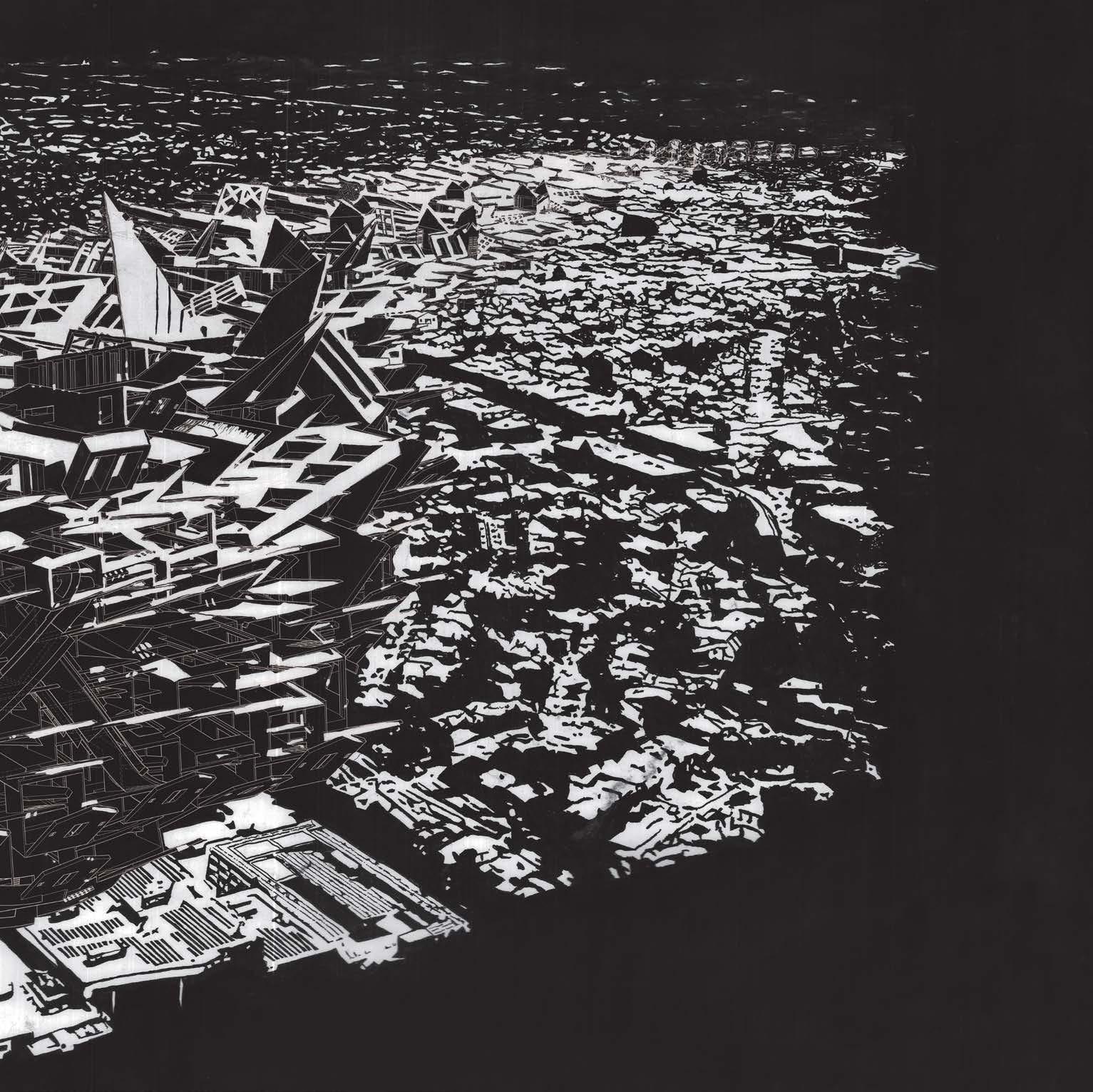
Micron pen and ink hand-rendering, scanned, overlaid digital linework with Rhino and Illustrator, Bristol Paper 20” x 40“


Plan Oblique Taxonomy
48 versions of the Petal House, drawn at varied degrees of “blooming.” Houses individually modeled in Rhino, linework adjusted in Adobe Illustrator.

Linework printed sheet and overlaid
ELEVATION
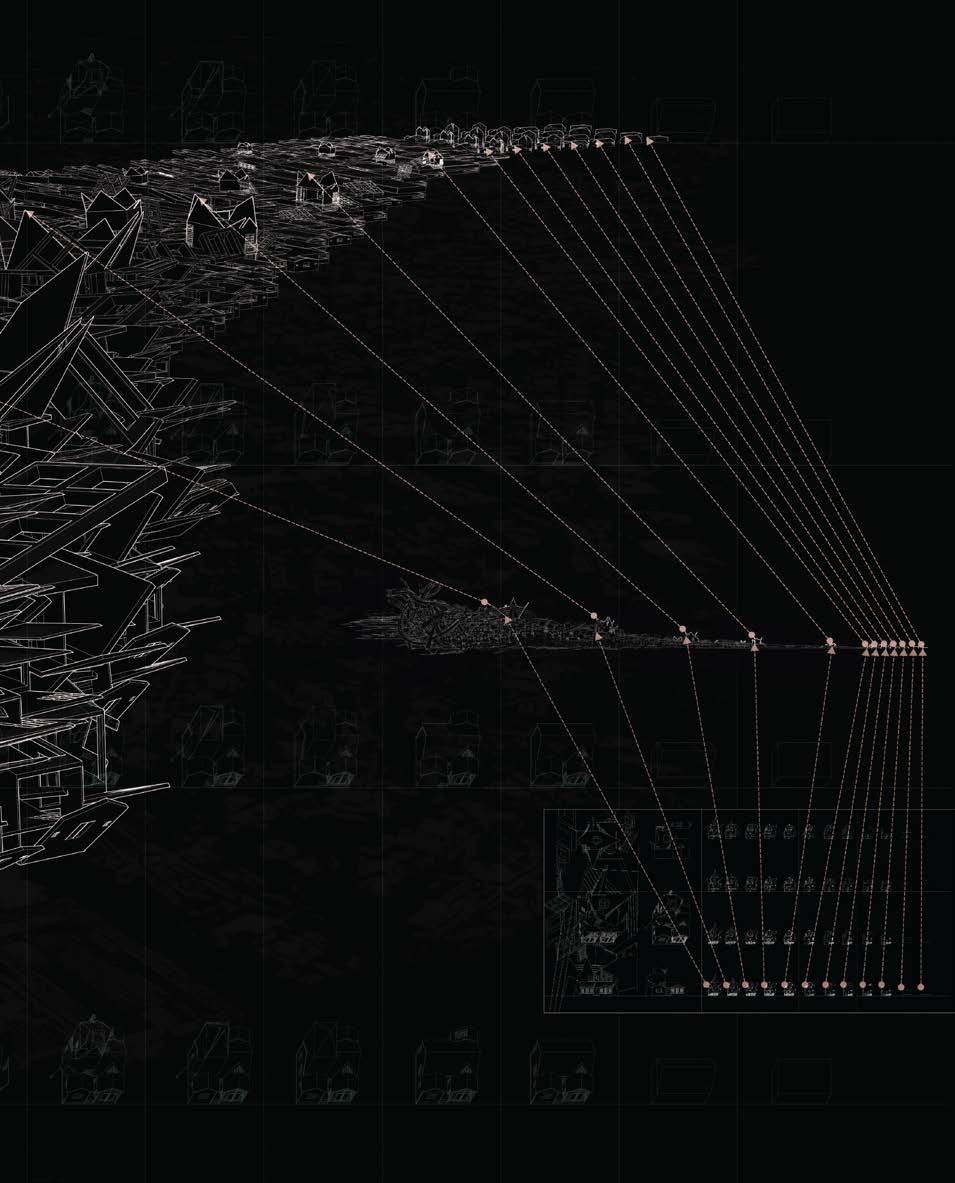

TAXONOMY
PROCESS
GENERATIVE DRAWING
Linework for the perspectiv drawing, shown connecting to its elevation and the taxonomy from which the elevation was generated. The perspective takes the taxonomy further than individual houses, aggregating the “bloom” into a landscape of taxonomy iterations and manipulated elements from the Petal House. The aggregation begins with the Petal House at its original location and both decreases to the background and grows to engulf downtown Los Angeles in the foreground. Thus, the drawing fully realizes the spirit of disrupting the city that the original Petal House sought to achieve.
Rhino, Illustrator, Photoshop
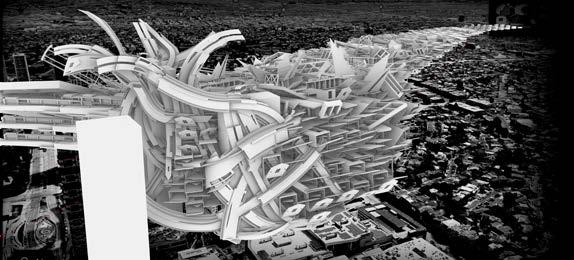


Aided hand-drawing with reference image underlay
Lightbox Reference Image (above) Google Maps screenshot with Rhino 3D model overlaid in Photoshop. Completed ink render below.

Hand Render
Micron pen and ink on 20 x 40” Bristol
Extras
Miscellaneous
architectural projects and independent work
Plaster Vessels
CRITIC Clara Ha
COURSE Spring 2022, Intro Design II
This studio focused on the design of vessels, architectural bodies capable of being inhabited. My explorations centered on using study-modeling as a method of going back and forth between digital and physical design. Ellipsoids that intersected in three dimensions were chosen as a formal system, and the physicality of these vessels was tested by wrapping plaster sheets around water-filled balloons at first and later around digitally-cut foam layers. Boolean operations in digital modelling were informed by the smushing of balloons physically. Voids in the digital model were executed by leaving regions of the model unplastered. Edges that were perfect digitally had to be smoothed with spackle by hand.
1) PLASTER-WRAPPING


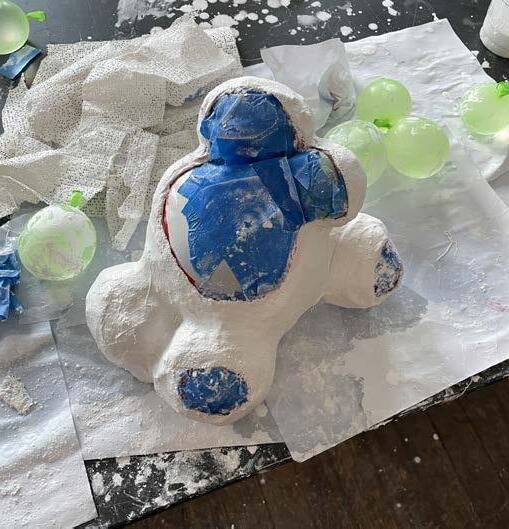
Using water balloons as a negative for plaster to physically explore intersecting ellipsoidal geometry

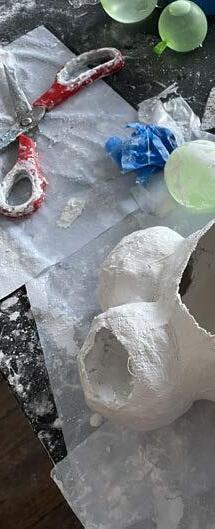
2) POPPING
Popping and draining semi-dried, leaving a remaining
FINAL MODEL
Studies of plaster vessels were combined with studies of folding planar surfaces (not shown). Light is filtered by a triangulated canopy made of solid bristol paper and perforated plaster sheets. Cuts in the canopy are informed by the ellipsoidal geometry of the plaster volumes below.
AXONOMETRIC
Inhabitation of the vessel soids for varying bodies:


balloons after the plaster is remaining plaster shell

3) DRYING + SPACKLING
After shell fully dries, spackle was used to smooth sur faces and articulate intersections/edges

is separated into distinct ellipvegetation, humans, and light.
5) FOAM BACK TO PLASTER



Foam sanded and wrapped with plaster to create hand models with the precision of digital modeling.

4) PHYSICAL TO DIGITAL & FOAM

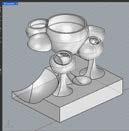

Physical form-finding informs digital modeling and fabrication, creating precise models of layered foam.
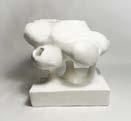


6) PLASTER NEW ITERATION
Combining physical and digital processes creates complex forms that are grounded in reality
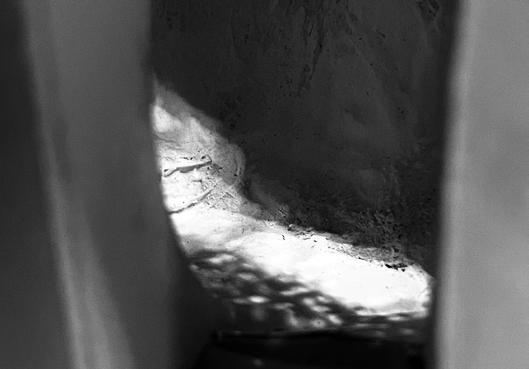
MODEL INTERIOR PHOTOS
Light falls through the canopy onto smooth, planar surfaces (left) and rough, sculpted surfaces (above).
More about me!

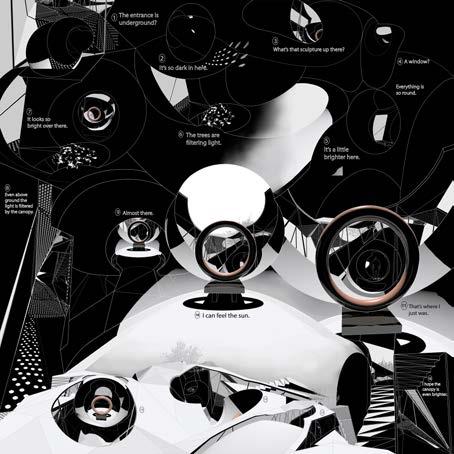



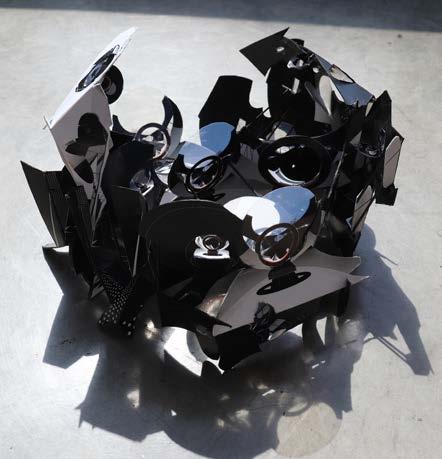



 White colored-pencil drawing of an owl decoration from my backyard.
Charcoal drawing of my grandparents.
Interior perspective collage of plaster vessels design.
Drawing printed on acetate and backlit.
Drawing transformed into an experimental model.
Experimental model detail and shadow study.
Me with the owl.
Micron pen drawing of a scene from my favorite video game.
Zoom-in of the drawing, testing different hatches.
White colored-pencil drawing of an owl decoration from my backyard.
Charcoal drawing of my grandparents.
Interior perspective collage of plaster vessels design.
Drawing printed on acetate and backlit.
Drawing transformed into an experimental model.
Experimental model detail and shadow study.
Me with the owl.
Micron pen drawing of a scene from my favorite video game.
Zoom-in of the drawing, testing different hatches.





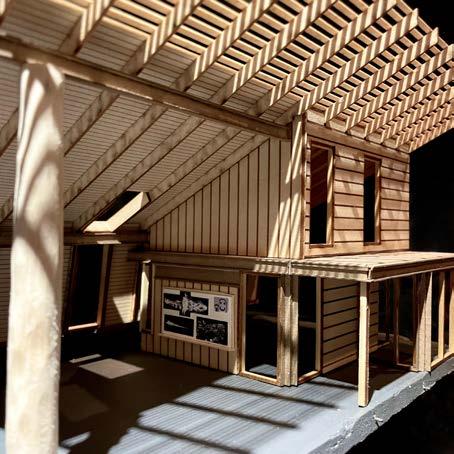





 Instagram Reel ad for JBL, an architecture student vlog.
Video-editing with Premiere Pro (above). Entry foyer render for internship (below).
AIAS club event that I organized, a student model show-and-tell.
detail
Model of Hawaii Prep Academy, partner: Cole Rudy. (ft. a mini pinup)
Site circulation model of Sara D. Roosevelt park, partner: Saori T.
Notebook sketch :)
First-year human prosthetic model, partner: Jeffrey Yang
Casted molds of our bodies fit within the prosthetic.
A Procreate doodle on an iPad at the mall.
Instagram Reel ad for JBL, an architecture student vlog.
Video-editing with Premiere Pro (above). Entry foyer render for internship (below).
AIAS club event that I organized, a student model show-and-tell.
detail
Model of Hawaii Prep Academy, partner: Cole Rudy. (ft. a mini pinup)
Site circulation model of Sara D. Roosevelt park, partner: Saori T.
Notebook sketch :)
First-year human prosthetic model, partner: Jeffrey Yang
Casted molds of our bodies fit within the prosthetic.
A Procreate doodle on an iPad at the mall.

